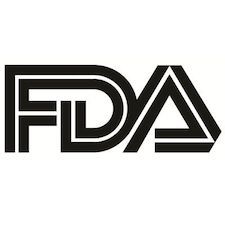Article
FDA Accepts Priority Review sBLA for Dupilumab in Prurigo Nodularis
Author(s):
Dupilumab is the first and only biologic to show positive Phase 3 results in patients with prurigo nodularis.

Today, the Food and Drug Administration (FDA) for Priority Review an supplemental biologics license application (sBLA) for dupilumab (Dupixent) as a treatment for adults with uncontrolled prurigo nodularis (PN).
Prurigo nodularis is the third dermatological disease with chronic itch including atopic dermatitis and biologic-naïve chronic spontaneous urticaria in which dupilumab has shown significant reductions in signs of symptoms.
Currently, there are no approved systemic treatments for PN, and dupilumab has functioned as the first and only biologic to show positive phase 3 results in this area via the PRIME and PRIME2 trials.
Regarding the LIBERTY-PN PRIME2 trial, adult patients with 20 or more nodules and severe itch were considered for dupilumab treatment, and 78 eligible adults with PN were given a 600mg loading dose of dupilumab followed by 300mg doses every 2 weeks for a total of 24 weeks.
Among participants with PN, the mean WI-NRS of 8.5 (1.0) at baseline; 62% had ≥20 to 100 nodules, 38% had >100 nodules. Nearly two-thirds of these patients had previously used systemic therapies.
When comparing dupilumab and placebo-treated patients, 37.2% versus 22.0% achieved ≥4-point reduction in WI-NRS at W12 (P=0.0216) and 57.7% and 19.5% achieved a ≥4-point reduction at week 24 (P<0.0001).
Meanwhile, 44.9% of patients with PN achieved IGA PN-S of 0 or 1 at week 24 compared to 15.9% of the placebo group (P<0.0001), and the rate of treatment-emergent adverse events was 57.1% and 51.2% for dupilumab vs placebo, respectively.
In an interview at the American Academy of Dermatology (AAD) 2022 Annual Meeting regarding the findings of PRIME2, Gil Yosipovitch , MD, FAAD, University of Miami, suggested that dupilumab could provide and alternative to the usual immunosuppressants prescribed for patients with PN.
“Previously, I've used drugs (on patients) that are immunosuppressants, and some of them are very strong,” Yosipovitch said. “They did work, but they come with a bag of side effects that patients could not tolerate, and the safety issue is really the major issue. But now we could do something safe and very targeted, so I do believe that this drug would make it to the market.”
The target action date for the FDA decision is September 30, 2022.





